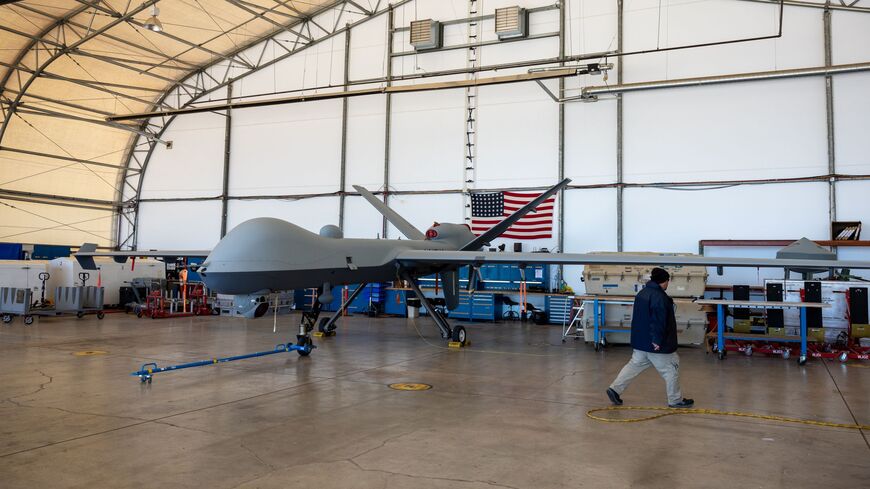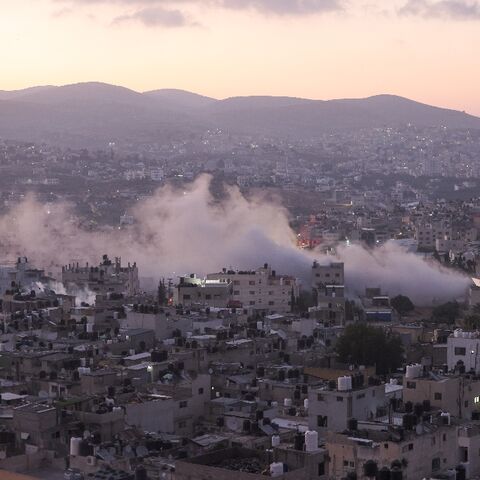A Russian fighter jet collided with a US MQ-9 drone over the Black Sea early on Tuesday, leading to the “complete loss” of the unmanned aircraft, the US military said.
The US MQ-9 “was conducting routine operations in international airspace” when a Russian Su-27 struck the drone’s propeller, forcing it to crash, US European Command said in a press release.
US officials said it remains unclear whether the collision was deliberate, but the Russian fighter jet and another Su-27 repeatedly “dumped fuel on and flew in front of the MQ-9 in a reckless, environmentally unsound and unprofessional manner” prior to the impact, the US military said.
The collision also nearly caused the Russian pilot to crash the Su-27, the commander of US Air Forces in Europe and Africa, Gen. James B. Hecker, said in a statement.
“We assess that it likely caused some damage to the Russian aircraft as well,” Pentagon press secretary USAF Brig. Gen. Pat Ryder said Tuesday. The fighter jet reportedly landed in nearby Crimea, but Pentagon officials do not believe it was forced down by the impact.
Russia’s defense ministry said in a statement that the encounter occurred off the coast of Crimea, but denied that its pilots struck the drone.
It remains unclear whether the US drone was armed. Pentagon officials said it was on a routine intelligence, surveillance and reconnaissance mission in an area frequented by US unmanned aircraft dating back to before Russia’s invasion of Ukraine.
US remote pilots were forced to guide the damaged MQ-9 down to the surface of the Black Sea following the collision, though there has been no confirmation yet on recovery efforts.
The US Navy does not maintain ships in the Black Sea amid Russia’s war in Ukraine. The last US warship exited the Bosphorus Strait in late 2021.
Pentagon press secretary Ryder said there was no indication that Russia’s navy had recovered the drone as of Tuesday night, local time, but did not specify when asked by Al-Monitor whether there has been any discussion with Turkish officials about recovery.
Why it matters: The collision is likely to raise tensions between the US and Russia over the ongoing war in Ukraine. The US State Department summoned Russia’s ambassador in Washington, Anatoly Antonov, on Tuesday in response to the incident.
“We are engaging with the Russians at senior levels,” State Department spokesperson Ned Price told reporters.
President Joe Biden was briefed on the incident on Tuesday morning, White House National Security Council spokesperson John Kirby told reporters.
The MQ-9 crash also comes amid heightened concerns in Washington over Russia’s transfers of arms technology to Iran, including US-made weapons recovered from the battlefield in Ukraine.
US officials believe Russia has shipped US-made Javelins and Stinger missiles to Tehran, likely for reverse engineering, albeit not in a systematic fashion, CNN reported earlier this week.
Russia has received hundreds of Iranian drones for use in Ukraine, and in return has reportedly agreed to send Tehran Su-35 fighter aircraft. US officials believe Iran has also weighed sending ballistic missiles to Moscow, while the Kremlin has been in talks over a potential transfers of air defense systems, including potentially the S-400, to Iran.
Two US defense officials speaking not for attribution acknowledged that Russia’s military may provide the MQ-9 to Tehran should its forces recover it, but suggested the drone was unlikely to contain exploitable intelligence.
“It would not be a game-changer for Iran’s drone program,” one of the defense officials said.
US MQ-9s have previously crashed over Yemen, Syria and Afghanistan. Iran shot down a US MQ-4 Global Hawk drone in 2019, and is believed to have reverse engineered the Lockheed-Martin RQ-170 Sentinel, which it is thought to have captured in 2011.
Iran’s Kaman-22 drone, unveiled in 2021, also appeared to be modeled after the US MQ-1, with at least some influence from the MQ-9. Iran’s Islamic Revolutionary Guard Corps publicly displayed an apparent US-made MQ-1 in 2016, though it remains unclear where it was obtained.
US Defense Secretary Lloyd Austin warned of the risks of Russian technology transfer to Iran during a visit to Israel last week.
Know more: US officials on Tuesday said Russian air interceptions occur somewhat frequently in the Black Sea region as Russian pilots seek to observe US unmanned activity.
It remained unclear on Tuesday whether US military officials had engaged their Russian counterparts via the de-confliction line during the aerial encounter, which lasted more than 30 minutes, according to press secretary Ryder.
“We don’t need to have some sort of check-in with the Russians before we fly in international airspace,” Kirby said Tuesday.
Meanwhile, in the skies above the Middle East, Russian pilots have increasingly flown over American troop positions in Syria without US permission in recent years, the top Air Force commander with responsibility in the region said last month.
Russian pilots also interfered with the largest-ever US-Israeli combined air exercise last month, USAF Lt. Gen. Alexus Grynkewich told reporters in Washington following the event.
The exercise, dubbed Juniper Oak, practiced long-range heavy airstrikes on strategic targets as the US and Israel continue to discuss conventional strike options to prevent Iran from ever obtaining a nuclear weapon.








